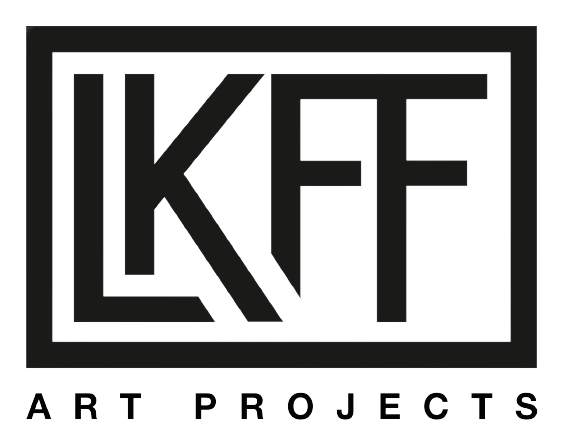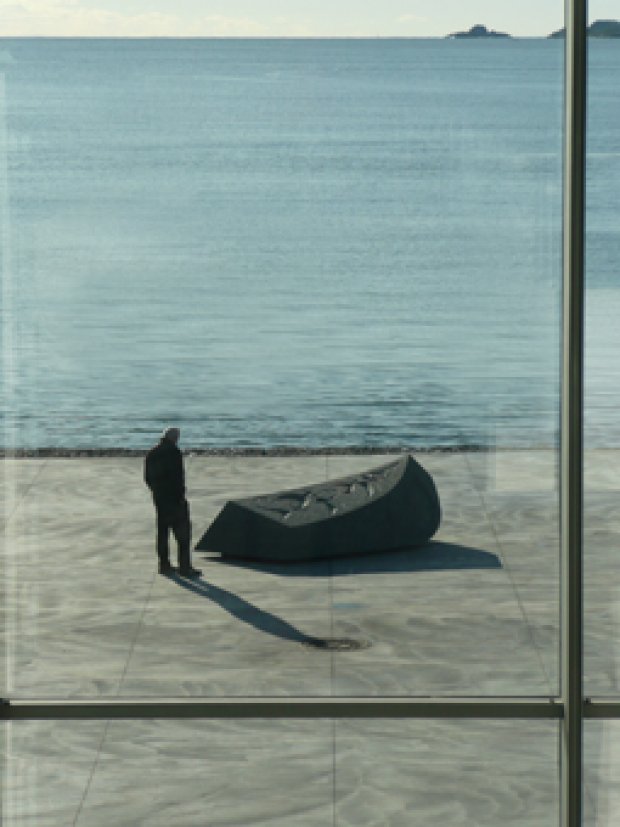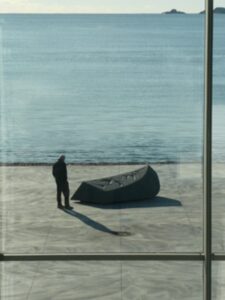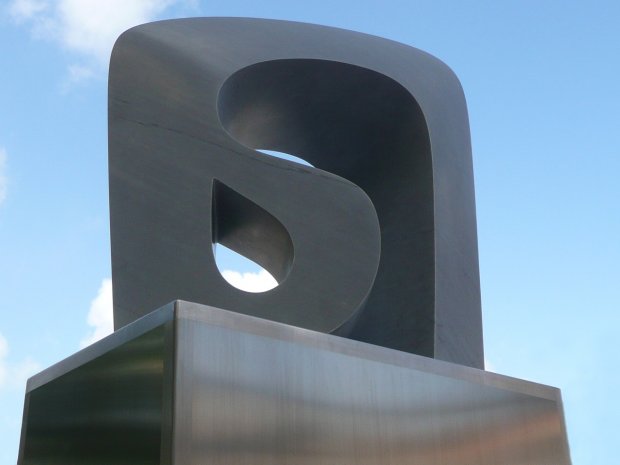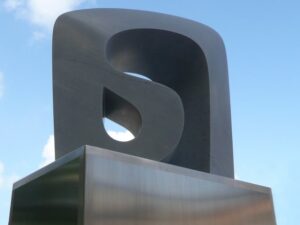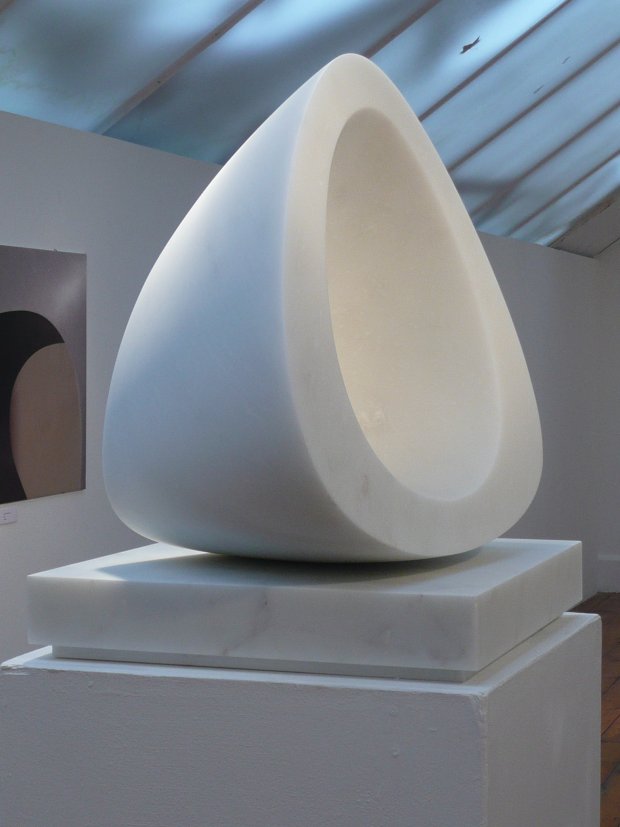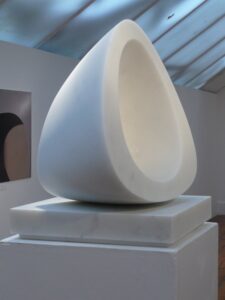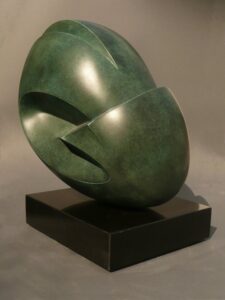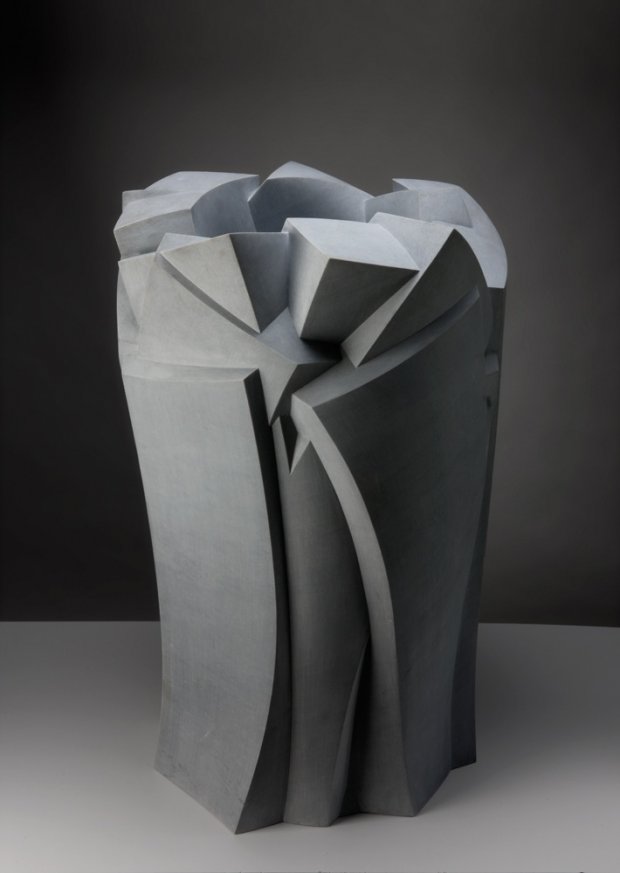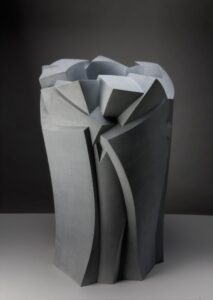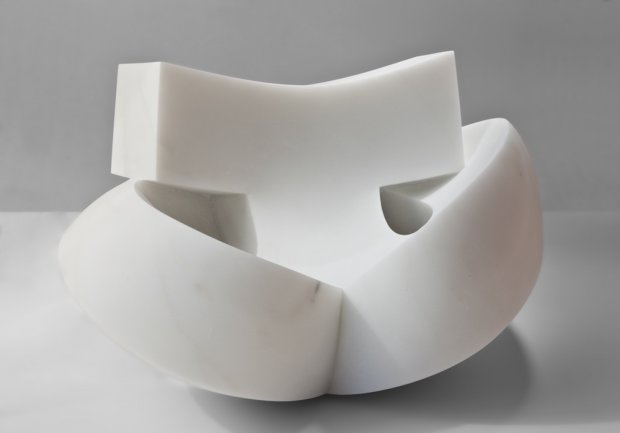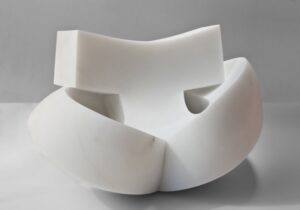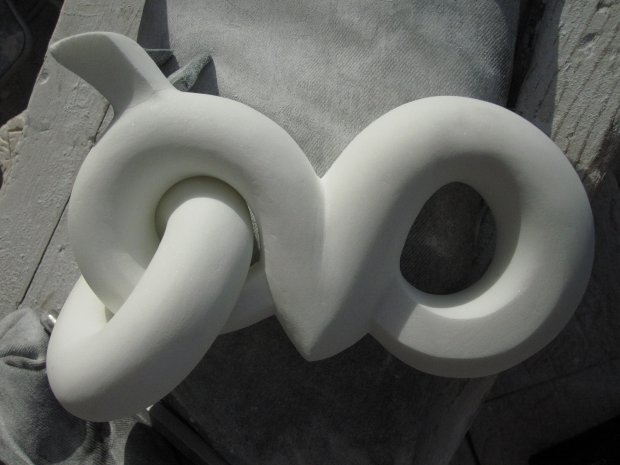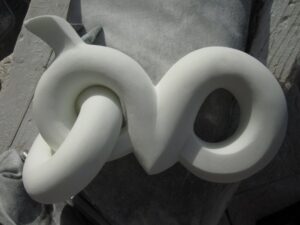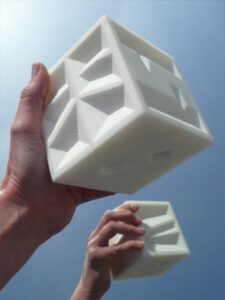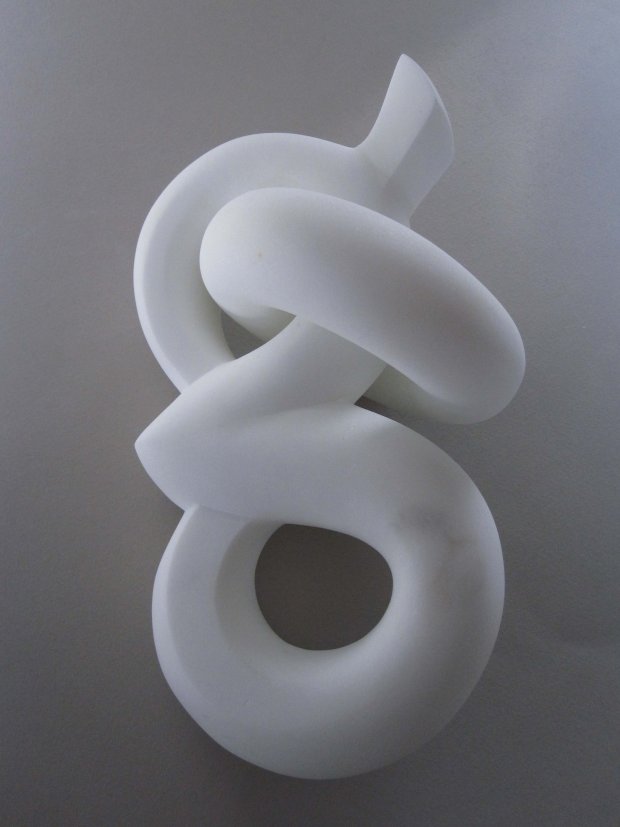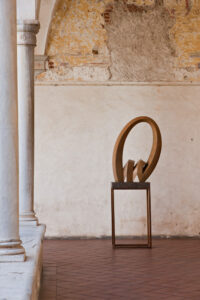Julia VANCE
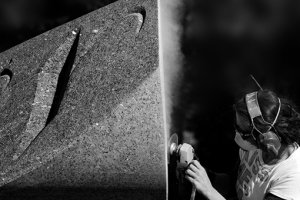
ritten words hold an important graphic strength, as much through the mark ink leaves on paper, as through images words bring up to our minds. The art world has long employed words; one can think about Magritte, Marcel Broodthaers or Alechinsky to name only a few from around here. In many artworks, words have progressively replaced the images and have themselves become the object of representation.
Julia Vance (born Hamburg, 1968 – nationality: Norwegian), associates through remarkable stone sculptures, the “signifier” and the “signified”. Both complete each other, become confusingly intertwined and lose themselves until the viewer can no longer distinguish where the word begins or the image ends. The signified finds its meaning through the sculptural composition and the letters arrange themselves to give meaning to the signifier.
(text by Mijntje Lukoff)
Biography
-
- 1968Born in Hamburg, Germany.
- 1984 – 1987Vance studies esthetical art at the Fagerborg College in Norway
- 1988 – 1991She attends a graphic production course at the Sogn Craft School (Sogn Yrkesskole) and later the School of Graphic Design (SFGD) in Norway
- 1989Design work at Lloyd Christie Garden architecture in England
- 1989 – 1990Assistant Art Director in a Norwegian advertising company.
- 1991 – 1992Julia moves to England where she specializes in calligraphy at the Roehampton Inst. of Higher Education, Calligraphy Department
- 1992Julia Vance completelly immerses herself in Calligraphy by becoming apprentice of letter designer, calligrapher and lettercarver Tom Perkins (UK) and shortly later, in 1993, lecturing in calligraphy and letter design at the Stately Art and Craft School of Oslo (SHKS) and at the University of Gjovik and Drammen
- 1994Munch Museum
- 1997 – 2001Techer training at the University of Oslo
- 2001Hurtigruta”‘MS Trollfjord”
- 2005Militærkasernene , Fredrikstad, Norway
- 2005She received the Norvegian State’s 3-year Artist Grant
- 2006While continuing her work in calligraphy, Julia explores new forms of expression, working with letter / word sculptures in marble and granite. Today, Julia works in Pietrasanta (Italy) and in Oslo (Norway)
- 2011Gallery LKFF Art & Sculpture Projects, Brussels, Belgium
Exhibitions
- 2014Kunstforening, Norway / solo-show, Norway
- 2013“HOLD” exhibited in front of the Norwegian Parliament, Norway
- 2013Galerie Mark Peet Visser, Holland
- 2013MEDI TERRANEO, Castello Ruffo, Sicilla, Italy
- 2012The 5th Calligraphy Biennial (by invitation), Government of Sharjah , the United Arab Emirates
- 2012Het Depot Gallery, Holland
- 2011Knokke Art Fair (with Gallery LKFF), Belgium
- 2011Sant Agostino, Pietrasanta, Italy
- 2009RBS Studio Gallery (Royal Britsh Society of Sculptors), England
- 2008St. Petersburg and Moscow, Russia
- 2008Oslo Townhall, Norway
- 2007Leichester University, sculpture-exhibition, Leichester, UK, United Kingdom
- 2007Botanical Garden, “Sculpture in the Garden”, Leicester University, England
- 2006Bærums Verk, “sculpture-exhibition by the river” , Norway, Norway
- 2006Aker Brygge, “sculpture-exhibition on the docks”, Norway
- 2006Avistegnernes Hus, Norway
- 2004Sculpture ‘Tenketid’ in front of the Norwegian Parliament (Eidsvolds Plass), Norway
- 2004Bogstad Gård , Norway, Norway
- 2002Atelier Skårer , Norway, Norway
Collections
- “Annerledes” (granite/Larvikit, L:350cm, H:100cm), Kulturhuskaia in Larvik, Larvik, Norway
- Steinerhøyskolen, Norway
- Inscription on bell-tower in concrete and lime-wood, Holt Graveyard, Holt, New Orleans, USA
- Mosebekk Tegne- og maleskole, Norway
- Stone-inscription for Otto Sverdrup-monument (by Per Ung)
- The Norwegian Art Council
- Norwegian Television Broadcasting company (NRK)
Press
Bibliography
- 2000The Art of Letter Carving in Stone, by Tom Perkins (ISBN 978 1 86126 879 2)
- 2000Calligraphy School, by Gaynor Goffe and Anna Ravenscroft (ISBN 978 O 89577 524 5)
- 2000The complete guide to calligraphy, by Ralph Cleminson
